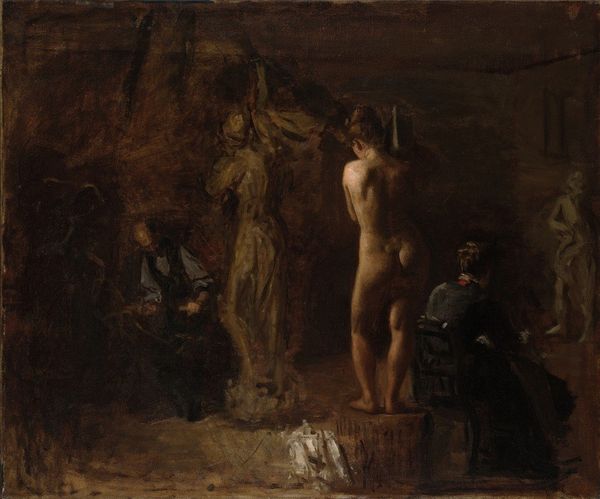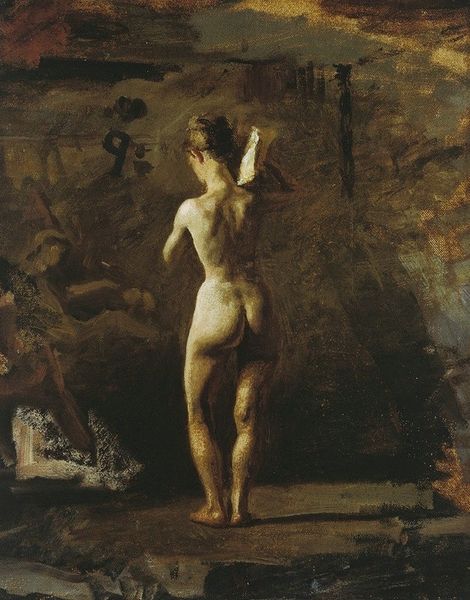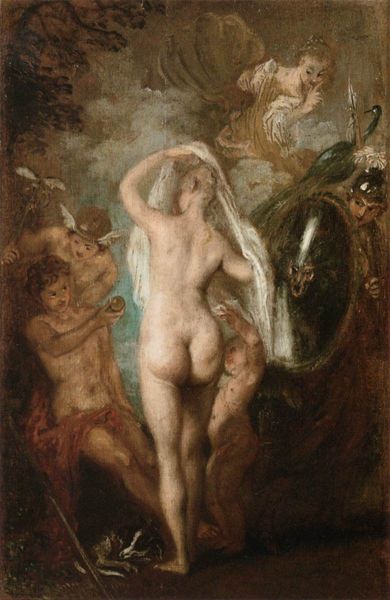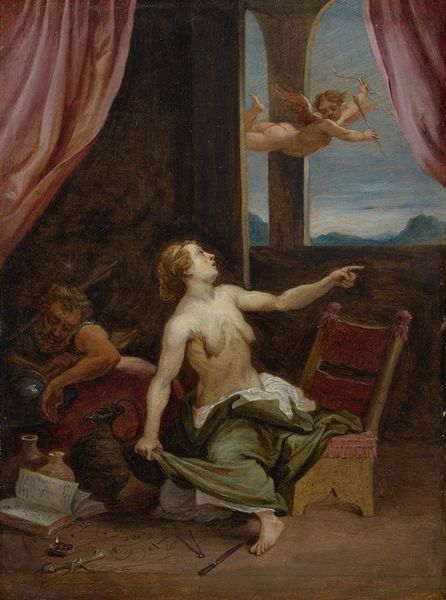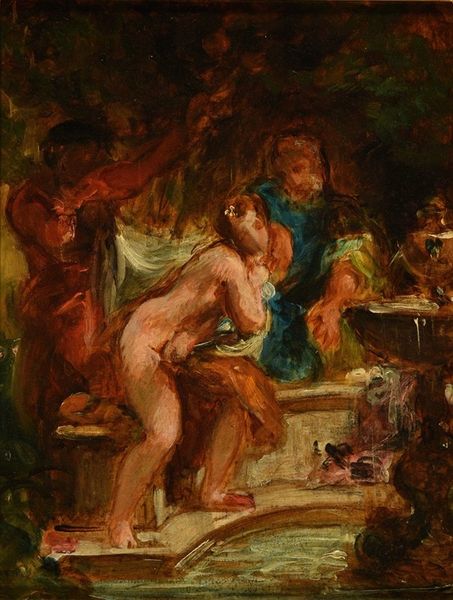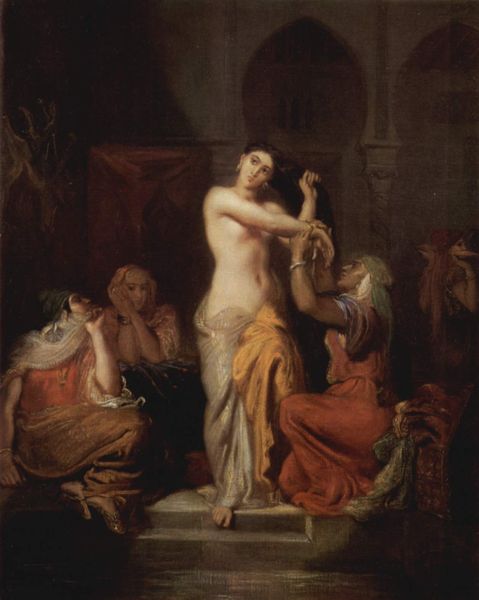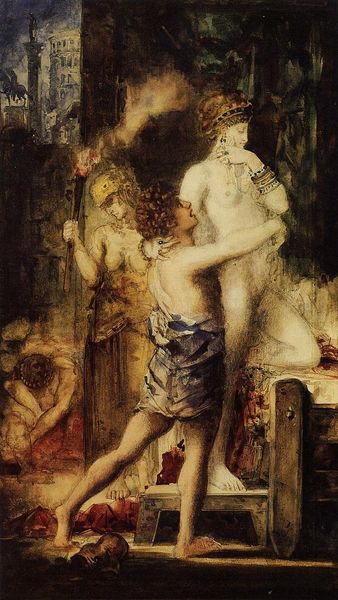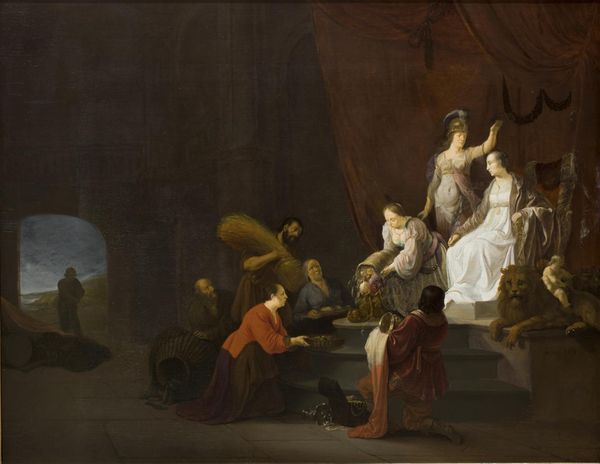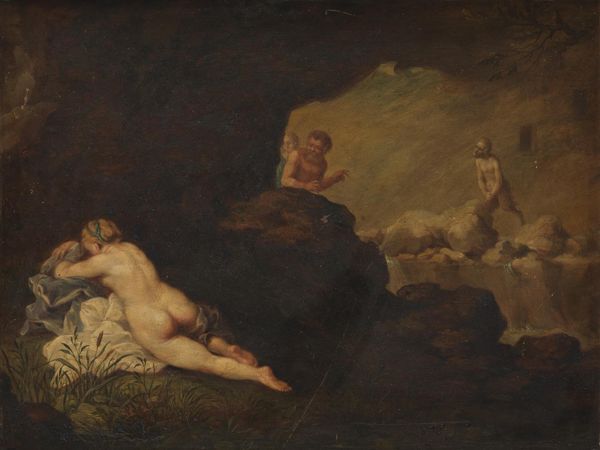
William Rush Carving His Allegorical Figure of the Schuykill River 1877
0:00
0:00
thomaseakins
Philadelphia Museum of Art, Philadelphia, PA, US
painting, oil-paint
#
portrait
#
painting
#
oil-paint
#
oil painting
#
female-nude
#
genre-painting
#
history-painting
#
academic-art
#
nude
#
realism
Copyright: Public domain
Curator: Well, it's definitely not what I expected. It feels... surprisingly intimate, almost voyeuristic, with the nude model casually posed amidst the working clutter of the sculptor’s studio. There is an immediacy about it that seems to dissolve the barrier between us and that private moment. Editor: That's an interesting take. This oil painting by Thomas Eakins, titled "William Rush Carving His Allegorical Figure of the Schuylkill River," was completed around 1877. It offers not just an intimate scene, but also a really fascinating study in American art history. We’re looking at Eakins’ re-imagining of an event from around 1809, depicting the real-life sculptor William Rush at work. Curator: Re-imagining is key! Because beyond the historical aspect, it feels like Eakins is exploring themes of artistic creation itself. The soft light on the model makes her look both vulnerable and powerful, embodying that tricky dynamic between artist and muse. The entire work emanates this feeling that art comes from this weird tension between raw reality and refined idea. Don’t you feel it? Editor: Absolutely. What Eakins achieves here is quite groundbreaking. By openly depicting a nude model, which wasn't common practice in American art at the time, he invites conversation on public art and propriety. Notice how the woman’s mother, acting as chaperone, sits to the side. The act seems very charged, as if we have stumbled into some dangerous terrain. And the whole point was to create this statue, eventually erected as public art! Curator: That brings in another layer, right? This sculpture of the river... it goes from private inspiration to civic pride. The idea that this whole delicate, somewhat subversive creative process results in something so boldly public. Eakins seems to relish that paradox. Editor: Precisely. The historical context of art production here is crucial. Museums, the role of patronage, and public opinion heavily impacted artistic expression. By embedding that history, and not sanitizing the moment of creative generation, he does a wonderful job exposing these things to us. Curator: Ultimately it becomes this multilayered reflection on art, creation, and cultural attitudes that keeps unfurling every time you revisit it. Almost like Rush's sculpture itself – there's always another angle, another perspective to discover. Editor: A point beautifully embodied in this single painting. By pulling back the curtain, Eakins shows the power and responsibility inherent in both artistic and cultural vision.
Comments
No comments
Be the first to comment and join the conversation on the ultimate creative platform.
